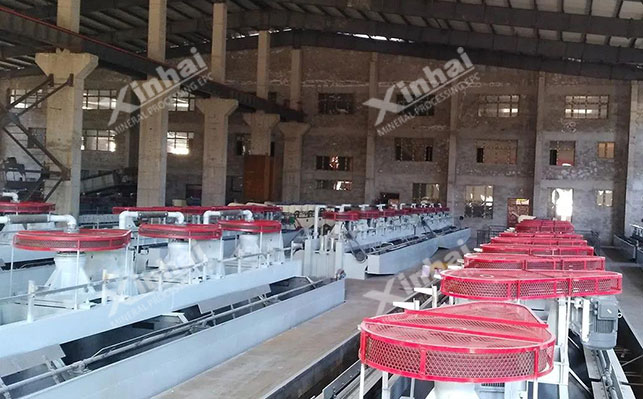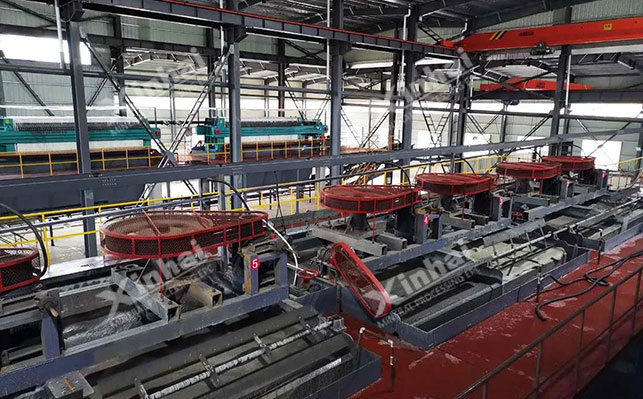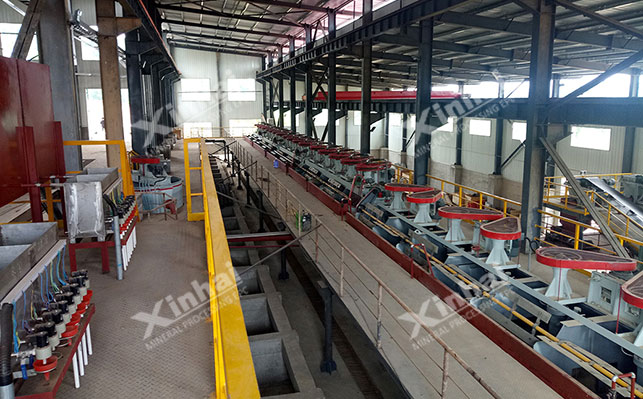In the early days, due to the extensive mining of some mines and the backwardness of beneficiation technology and equipment, some valuable metals and non-metallic minerals were left in the tailings. Among them, quartz is a common non-metallic mineral in gold tailings. Especially in the quartz vein type and altered rock type gold deposits, the quartz content is high, so the comprehensive recovery potential is huge.
The method of quartz sand re-processing is mainly flotation. But due to the structural characteristics of the ore, feldspar is often associated with quartz, so the effective separation of quartz and feldspar is necessary to better recover quartz from gold tailings. At present, the separation methods of quartz and feldspar include hydrofluoric acid method, fluorine-free acid method, neutral medium flotation method and alkaline medium flotation method.

The hydrofluoric acid method is a separation method in which hydrofluoric acid or fluoride is used as the activator of feldspar.
Adding hydrofluoric acid to the pulp, as the pH value of the pulp decreases, the dissociation balance between the quartz and the feldspar surface in the pulp is broken, the H+ concentration increases, and the dissociation equilibrium moves in the direction of decreasing negative charge. When the value is 2 to 3, the surface potential of quartz is controlled to be close to 0. Due to the corrosion of silicon-oxygen (Si-O) bonds by HF (hydrogen fluoride) acid, the Al3+ on the feldspar surface protrudes and becomes an active center. Quickly form [SiF6]2- complex ions, and form stable complexes with Al3+, K+, Na+ on the feldspar surface, attach to the feldspar surface, make the feldspar surface negatively charged, and then add cationic amine collectors to electrostatically adsorb on the surface of feldspar, making the surface of feldspar hydrophobic to realize reverse flotation of quartz.

The fluorine-free and acid method is to use amine and petroleum sulfonate as mixed collectors of anion and cation to preferentially float feldspar under strong acid condition.
Under strong acid, using H2SO4 (sulfuric acid) or HCl (hydrogen chloride) as pH adjuster, in the slurry with pH value of 2 to 3, the dissociation equilibrium of the feldspar surface is moved to the direction of decreasing negative charge, so that the quartz surface is not charged, but the voids in the Al3+ region in the feldspar lattice balance the metal ions K+ or Na+ are dissolved in the slurry, so that the surface of the feldspar is negatively charged, and then an amine cation collector is used to first adsorb the negative charge on the surface of the feldspar. In this area, petroleum sulfonate is used as an anion collector, which is complexed with the adsorbed amine collector and adsorbed on the surface of feldspar together, so that the adsorption capacity of the collector on the feldspar surface is larger than that of quartz, so that the feldspar complete flotation first and is separated from quartz.

Neutral flotation method is to separate quartz and feldspar in neutral natural medium with a mixed collector of anions and cations, plus inhibitors.
Generally, in a neutral medium, quartz and feldspar are both negatively charged, and amine cations can be used to capture Al micro-domains on the surface of feldspar to form characteristic adsorption, and then combined with oleate ion anion collectors to form hydrophobic molecular micelles, improving the adsorption capacity of the feldspar surface and floating the feldspar. This is the process about how the quartz is separation.

Alkaline flotation method is to use alkaline earth metal ions or non-ionic surfactants (such as 1-dodecanol) as activators and alkyl sulfonates as collectors under the condition of highly alkaline medium to separate quartz.
When the pH value is 11-12, flotation reagents such as 1-dodecanol and 1,8-octaalkyldiamine are added to make the pulp form neutral complexes, which will combine with free sulfonate ions on the quartz surface, acting as a semimicelle accelerator, making the quartz hydrophobic and floating, thereby realizing the separation of quartz and feldspar.
The above are several commonly used flotation methods for gold tailings re-separation and recovery of quartz. When choosing the proper method, it is necessary to conduct beneficiation tests to determine the properties of quartz and other minerals in gold tailings, and scientifically and reasonably customize suitable flotation processes. in order to improve the recovery rate of quartz.